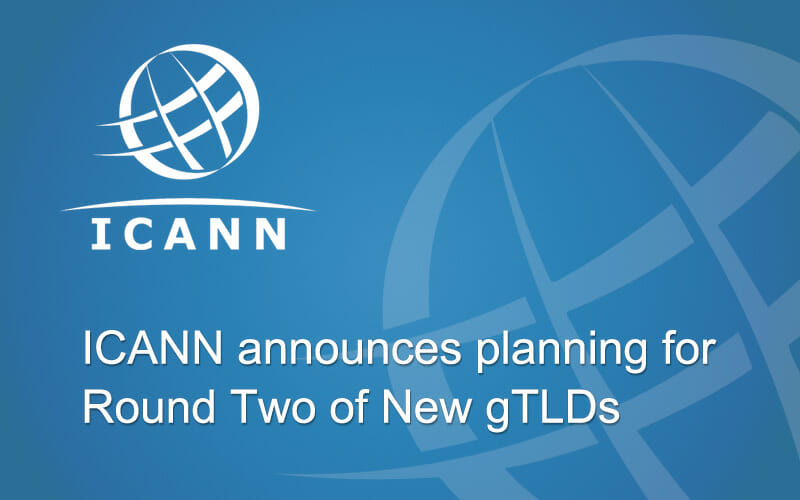ICANN Announces Planning for Round Two of New gTLDs
By Nick Wood, Executive Chairman and Co-founder
ICANN has published a short paper in advance of its 65th meeting in Marrakech which starts on 23 June 2019. Entitled, “ICANN Org’s Readiness to Support Future Rounds of New gTLDs”, it describes ICANN’s working assumptions for “policy implementation and operational readiness for a subsequent round of new gTLDs”. The document is necessary for ICANN to move forward with essential preparations for the next round. It is a thin document – only five pages – so the assumptions are high level, but they provide some useful insight to those brands thinking about applying for a top-level domain in the future or the protection of their marks.
They include:
- Board approval of the policy recommendations emanating from the Subsequent Procedures Working Group (SubPro WG). We believe the policy recommendations will be delivered to the Board in the second quarter of 2020.
- A fresh operational infrastructure will be created (new people, new processes and new systems, all built on one of ICANN’s existing systems – as opposed to the one-off custom-made solution used in 2012)
- The expectation that the costs of the new program will be covered by the application fee. A new financial model will be developed in order to track development/costs from the earliest stage which can be utilised on an ongoing basis.
- A communications and awareness campaign to be run to raise awareness
- An assumption that there will be about 2,000 applications when the application window opens (similar to the amount received in 2012), with “significantly lower” volumes for ongoing applications in subsequent rounds.
- A suggestion that only 1,000 applications a year will be delegated to ensure the stability of the DNS. However, recent work within the SubPro WG seems to indicate that a greater amount of applications could be delegated per year if ICANN has the capacity to evaluate a greater number of applications. In either case, the community through SubPro will need to recommend a fair means of prioritising applications.
- The initial application window will probably be open for one to three months with “subsequent application windows opening during the same timeframe, one per calendar year”. This makes it clear that ICANN is assuming that there will not only be more than one additional round, but that such rounds will be implemented on a predictable recurring annual basis.
- There will be a new applicant guidebook which will outline changes to the program implementation based on the SubPro PDP that is looking to complete its work by the end of 2019.
- ICANN’s staff will be trained up on all new processes and tools with some critical functions such as application evaluation and objection processing being outsourced “to expert firms with requisite experience” as was the case in the 2012 round.
- New full-time staff and some temporary assistance will be hired based on “needed skills and experience”
- The program will be run on a cost-recovery basis. There is no indication of what the application fee will be yet.
According to Jeff Neuman (Com Laude’s SVP for the US), who serves as one of the Co-Chairs of the SubPro PDP, “this is an important milestone for ICANN to begin to plan and budget for the continuation of ICANN’s New gTLD Program.”
He believes that while the document is good news for those that would like to apply in the future for a brand gTLD, there is still a lot of work that needs to be completed in the SubPro WG as well as in a subsequent implementation team. Some of this work may impact the assumptions that have been made.
However, he added that:
“For the 2012 round of new gTLDs, ICANN began this type of planning more than five years prior to launch of that round. And like now, planning began well in advance of the completion of the policy development process. It is essential that ICANN continue this effort to ensure that when this policy work is completed, ICANN will be in a position to launch the program without undue delay.”
In the 2012 round of new gTLDs, Com Laude/Valideus managed 73 of the 75 new gTLD applications that were awarded the maximum score of 100% from the ICANN evaluators because we invested heavily in understanding a complex and changeable application system. From the look of it, ICANN wants the next and all subsequent rounds to be more predictable and transparent.
If ICANN manages to create a simpler, faster and less-expensive application process than in 2012, there are trademark owners across the globe who might apply for a closed Dot Brand registry to protect their IP and to gain more control over their digital destiny.
For more detail, visit ICANN. [PDF]
This article was also published in CircleID


Is a dot brand TLD right for your company?
Strengthen your brand & protect your customers
Request an initial assessment